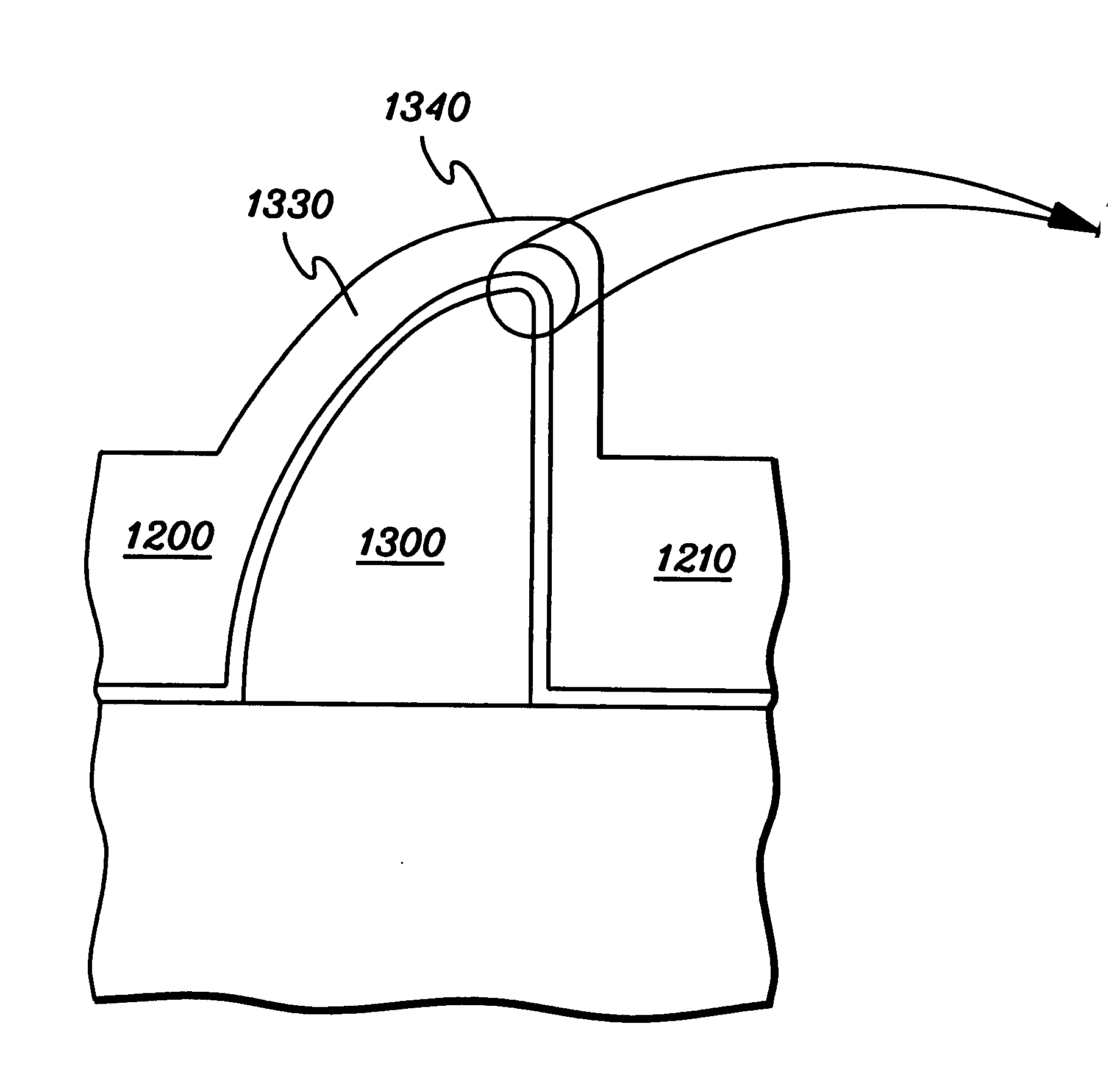Electronic fuse with conformal fuse element formed over a freestanding dielectric spacer
- Summary
- Abstract
- Description
- Claims
- Application Information
AI Technical Summary
Benefits of technology
Problems solved by technology
Method used
Image
Examples
Embodiment Construction
[0038] Recently developed e-fuse structures take advantage of electro-migration (EM) effects to overcome some of the above-noted problems of achieving scaling of programming voltage. The EM effect, caused by a positive divergence of the ionic flux, leads to an accumulation of vacancies, forming voids in the metal. Voids are formed inside of the metal conductors due to metal ion movement caused by momentum transfer from the electron flux at high current density. The void growth rate is a function of both temperature and current density, and therefore, the site having the smallest cross-sectional area in an interconnect tends to form voids first. Thus, it is advantageous to somehow increase the local current density in the fuse element.
[0039] One approach to increasing local current density is depicted in FIG. 1, wherein the plan view layout of the illustrated electronic fuse 100 is a two-dimensional “dog-bone” shape. Fuse 100, which employs in-plane dimensional differences to locate...
PUM
| Property | Measurement | Unit |
|---|---|---|
| Length | aaaaa | aaaaa |
| Radius | aaaaa | aaaaa |
| Electric potential / voltage | aaaaa | aaaaa |
Abstract
Description
Claims
Application Information
 Login to View More
Login to View More - R&D
- Intellectual Property
- Life Sciences
- Materials
- Tech Scout
- Unparalleled Data Quality
- Higher Quality Content
- 60% Fewer Hallucinations
Browse by: Latest US Patents, China's latest patents, Technical Efficacy Thesaurus, Application Domain, Technology Topic, Popular Technical Reports.
© 2025 PatSnap. All rights reserved.Legal|Privacy policy|Modern Slavery Act Transparency Statement|Sitemap|About US| Contact US: help@patsnap.com



